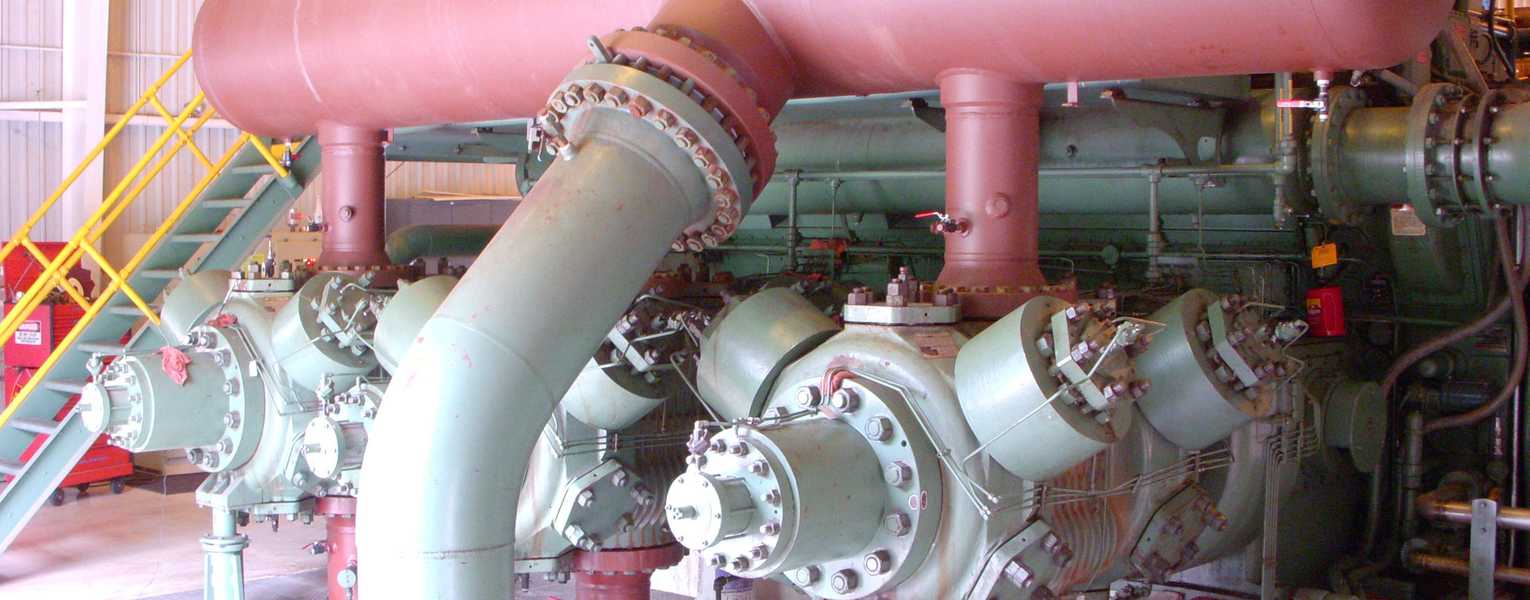Mechanical modeling techniques are used to evaluate skids and foundations to eliminate excessive vibration and dynamic stress caused by mechanical and pulsation-induced shaking forces generated by compressors and pumps. Dynamic analyses are performed to assess the likelihood of a coincidence of system component structural resonance with applicable excitation sources.
Dynamic Foundation Analyses
SwRI can develop a finite element (FE) model of the foundation block and mounted machinery. Geotechnical data can be used to determine the soil support stiffnesses on the foundation block. The soil stiffness supporting the foundation block will be determined using an Elastic-Half Space theory based lumped parameter approximation method. The FE analysis can predict the system natural frequencies and determine the overall dynamic response of the system with the machinery unbalanced forces acting on the system.
SwRI can analyze a variety of traditional and alternative foundation systems including:
- Skid mounted compressor on a block foundation
- Compressor mounted directly to a block foundation
- Concrete block on piles (with or without a skid)
- Skid on screw piles (without concrete)
- Skid mounted directly on a gravel pad
Dynamic Skid Analyses
SwRI can develop a finite element (FE) model of the skid, compressor and driver and apply the unbalance loads from the compressor and driver, to determine the system performance in the full range of expected operating speeds. A modal analysis can provide frequency responses of the driver / compressor / skid system to assure that there are no skid resonances in the running speed range of the compressor. A harmonic analysis can be performed with the excitation forces and moments generated by the driver and compressor as the forcing functions, and the skid vibration and stress levels will be predicted in the operating frequency range. A lifting analysis can be performed to ensure that the stresses and deflections (or alignments) are within allowable limits during lifting operations.
Load Prediction
Compressor loads are determined based on rotating inertias, reciprocating inertias, and compressor operating conditions. The resulting gas and inertia loads are applied to a model of the frame and block to determine the magnitude of compressor loads transmitted to the block. Features of the load prediction method include:
- Gas loads based on prediction of compressor cylinder pressure variation
- Throw-by-throw analysis of gas and inertia forces
- Finite element modeling of block and frame flexibility
- Addition of anchor bolt loads field and consultation services
Supplementary Services
A number of analytical and field problem-solving services are available at SwRI that supplement and complement foundation block stress analysis, including:
- Foundation dynamics including natural frequencies and forced response based on elastic half-space soil representation
- Shaker studies to measure dynamic response and resonances of the foundation
- Field monitoring of alignment changes using lasers or liquid level probes
- Field measurement and monitoring of compressor and foundation vibrations as a means of assessing installation integrity
- Strain gauging of piping to assess vibration severity and failure risk
- Compressor performance measurement and analysis
- General problem-solving services for compressor installations
Contact us for more information about rotating machinery technologies at SwRI. To contract with SwRI, please contact the Machinery Services Hotline at +1 210 522 3000.
For more information, contact Benjamin A. White or call +1 210 522 2554.

